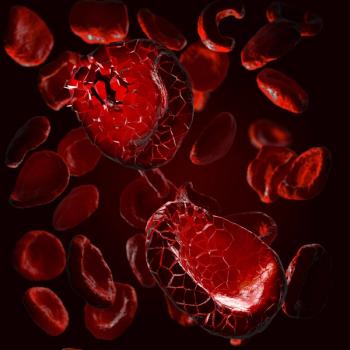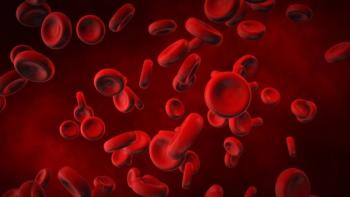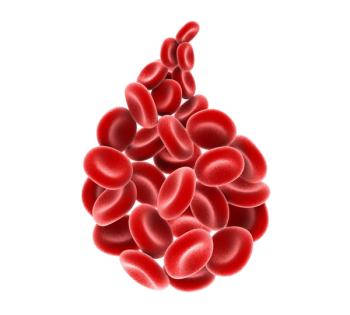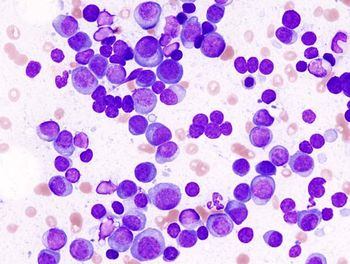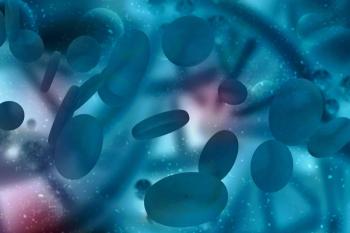
UK’s MHRA Approves Belantamab Mafodotin/Chemo in Myeloma Indications
Results from the DREAMM-7 and DREAMM-8 trials support the approval of belantamab mafodotin with chemotherapy in relapsed/refractory multiple myeloma.
The UK’s Medicines and Healthcare products Regulatory Agency (MHRA) has approved belantamab mafodotin (Blenrep) in combination with bortezomib (Velcade) plus dexamethasone (Vd) in the treatment of adult patients with multiple myeloma who received at least 1 prior therapy, and in combination with pomalidomide (Pomalyst) and dexamethasone (Pd) in those who received at least 1 prior therapy including lenalidomide (Revlimid), according to a press release from the developer, GSK.1
This is the first regulatory decision in this population and treatment setting for belantamab mafodotin anywhere in the world.
“As patients with multiple myeloma increasingly receive combination therapies at diagnosis, treatment options available in the community setting that use different mechanisms like [belantamab mafodotin] are crucial to extending remission and ultimately survival,” said Joseph Mikhael, MD, chief medical officer of the International Myeloma Foundation and professor at the Translational Genomics Research Institute of City of Hope Cancer Center.1 “We are pleased to see this advancement in the treatment landscape extended across both academic and community settings where many patients are treated.”
Supporting data for the approval came from the
Previously, in November 2024, the treatment combinations were
DREAMM-7
DREAMM-7 was an open-label, randomized trial that evaluated belantamab mafodotin with Vd compared with daratumumab (Darzalex) with Vd in patients with multiple myeloma who experienced progression after 1 or more lines of therapy.
At a median follow-up of 28.2 months (range, 0.1-40.0), the median progression-free survival (PFS) was 36.6 months (95% CI, 28.4-not reached [NR]) with the belantamab mafodotin therapy vs 13.4 months (95% CI. 11.1-17.5) with the daratumumab therapy (HR, 0.41; 95% CI, 0.31-0.53; P <.001).
Partial responses (PRs) or better occurred in 83% (95% CI, 77%-87%) of patients with belantamab mafodotin and 71% (95% CI, 65%-77%) of patients with daratumumab; 35% of patients with belantamab mafodotin achieved a complete response (CR) or better vs 17% in the daratumumab group. A CR or better plus minimal residual disease negativity was observed in 25% vs 10%, respectively.
Additionally, an interim analysis showed that belantamab mafodotin plus Vd met the key
The trial enrolled a total of 494 patients, 243 of whom received 2.5 mg/kg of belantamab mafodotin on day 1 of 21-day cycles until disease progression and 251 received 16 mg/kg of daratumumab per week in cycles 1 to 3, every 3 weeks for cycles 4 to 8, and every 4 weeks for cycle 9 and beyond. In both groups, bortezomib was given subcutaneously at 1.3 mg/m2 of body surface area on days 1, 4, 8, and 11 of 21-day cycles, and dexamethasone was given orally or intravenously at 20 mg on the day of and the day after bortezomib administration, both for the first 8 cycles.
Patients were excluded from enrollment if they had disease refractory to anti-CD38 therapy or had exposure to anti-BCMA therapy.
The primary trial end point was PFS. Secondary end points were OS, response duration, and adverse events (AEs).
All patients experienced an AE, with grade 3 or higher AEs occurring in 95% of the belantamab mafodotin group and 78% of the daratumumab group; serious AEs occurred in 50% and 37%, respectively.
DREAMM-8
DREAMM-8 was an open-label, randomized trial that evaluated belantamab mafodotin with Pd compared with bortezomib with Pd in patients with relapsed/refractory multiple myeloma who progressed after at least 1 lenalidomide-containing therapy.
At a median follow-up of 21.8 months (range, <0.1-39.2), the 12-month estimated PFS rate was 71% (95% CI, 63%-78%) with belantamab mafodotin compared with 51% (95% CI, 42%-60%) with bortezomib (HR, 0.52; 95% CI, 0.37-0.73; P <.001).
PRs or better occurred in 77% (95% CI, 70%-84%) with belantamab mafodotin and 72% (95% CI, 64%-79%) with bortezomib; CRs or better occurred in 40% (95% CI, 32%-48%) and 16% (95% CI, 11%-23%), respectively.
The trial enrolled a total of 302 patients, 155 of whom received belantamab mafodotin and 147 who received bortezomib. Both groups received pomalidomide and dexamethasone.
The primary trial end point was PFS; disease response and safety were evaluated.
Grade 3 or higher AEs were observed in 94% of the belantamab mafodotin group and 76% of the bortezomib group; ocular events were observed in 89% and 30%, respectively.
References
- Blenrep (belantamab mafodotin) combinations approved by UK MHRA in relapsed/refractory multiple myeloma. News release. GSK. April 17, 2025. Accessed April 17, 2025. https://tinyurl.com/pepj4ycv
- Hungria V, Robak P, Hus M, et al. Belantamab mafodotin, bortezomib, and dexamethasone for multiple myeloma. N Engl J Med. 2024;391(5):393-407. doi:10.1056/NEJMoa2405090
- Dimopoulos MA, Beksac M, Pour L, et al. Belantamab mafodotin, pomalidomide, and dexamethasone in multiple myeloma. N Engl J Med. 2024;391(5):408-421. doi:10.1056/NEJMoa2403407
- Blenrep combinations accepted for review by the US FDA for the treatment of relapsed/refractory multiple myeloma. News release. GSK. November 25, 2024. Accessed April 17, 2025. https://tinyurl.com/4wjtdf3t
- Blenrep shows overall survival benefit in head-to-head DREAMM-7 phase III trial for relapsed/refractory multiple myeloma. News release. GSK. November 14, 2024. Accessed April 17, 2025. https://tinyurl.com/4zpxuk3m
Newsletter
Stay up to date on recent advances in the multidisciplinary approach to cancer.


